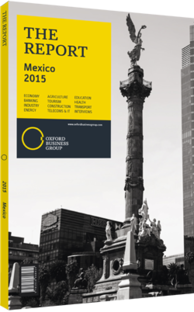Higher standards: The new insurance law will further strengthen the industry
Mexico’s new insurance and sureties law (Ley de Instituciones de Seguros y de Finanzas, LISF) came into effect in April 2015. The law, considered one of the most advanced of its type in Latin America, seeks to bring the country into line with the Solvency II insurance industry regulatory standards developed in Europe.
The new solvency framework consists of three pillars: pillar I concerns capital adequacy and valuation; pillar II sets standards of enterprise risk management; and pillar III concerns transparency and market disclosure. After the introduction of LISF, in June 2015 the European Commission recognised the solidity of Mexico’s insurance regulations, placing the country on a list of jurisdictions which are considered to have “equivalent” regulatory systems in the insurance sector (the list includes Switzerland, the US, Australia, Canada, Bermuda and Brazil).
Gradual Phase-In
The regulatory regime is being phased in gradually, with insurance companies not required to meet the pillar I ratios until April 2016. These increased capital reserve requirements are considered one of the most demanding aspects of the LISF, which are likely to require the biggest compliance effort from market players. According to industry sources, the capital reserves required under LISF are roughly double the legal minimum that had been stipulated under previous legislation. Insurance companies’ capital reserves were estimated at MXN810bn ($54.51bn) at the end of 2014, up by 14.1% on the end of 2013, according to the Mexican Association of Insurance Companies. Credit rating guidelines will also be phased in as they are to be based on data reported at the end of 2015. Under the law, all insurance companies must be subject to an external credit rating regime, something that was not obligatory before.
Mario Senties, director general of Fianzas Senties & Chauvet, welcomed the introduction of the LISF. He noted, however that, alongside Mexico’s traditional surety product (regulated under a separate law) LISF introduces a new, more insurance-like product called ‘seguro caución’. Having the two products on the market would offer more choice and bring the country into line with international practice, but some details of the transition would need to fine-tuned in the secondary legislation and other regulations, he said.
“In the surety business, if there is a failure to perform on a contract, the approach is to investigate the circumstances, and then pay: with the seguro caución it is the other way round: you pay out and then investigate the circumstances,” Senties told OBG. He felt nevertheless that it would be better if the regulations governing the new product would at least allow a short conciliation period before the payment stage, to cut down where possible on the number of disputes.
Towards A Stronger Industry
Most insurance companies have welcomed Solvency II, noting that it will introduce better risk management, strengthen the industry and improve its image in the eyes of the consumer. There is a price to pay, however – companies say full compliance will increase operating costs. What remains a subject of debate is whether the extra costs will have a differentiated impact on industry players. One initial suggestion is that increased compliance and administrative costs will be easier to cover by the larger insurers, who can achieve economies of scale in their back office operations. This has led analysts to suggest Solvency II may trigger a degree of consolidation in the industry with mergers and acquisitions among the smaller players. But there is also a question over whether Solvency II may have a differentiated impact on single-line or specialised insurers on the one hand, versus multiline or general insurers on the other. It has been suggested that because the new law encourages diversification of risk, multiline insurers, which are by definition handling a more diversified business portfolio, may have an embedded advantage over single-line insurers. Yet this too has been questioned, with some arguing that single-line insurers can diversify across other dimensions, such as the geographic spread of their risks, across the country.
You have reached the limit of premium articles you can view for free.
Choose from the options below to purchase print or digital editions of our Reports. You can also purchase a website subscription giving you unlimited access to all of our Reports online for 12 months.
If you have already purchased this Report or have a website subscription, please login to continue.

